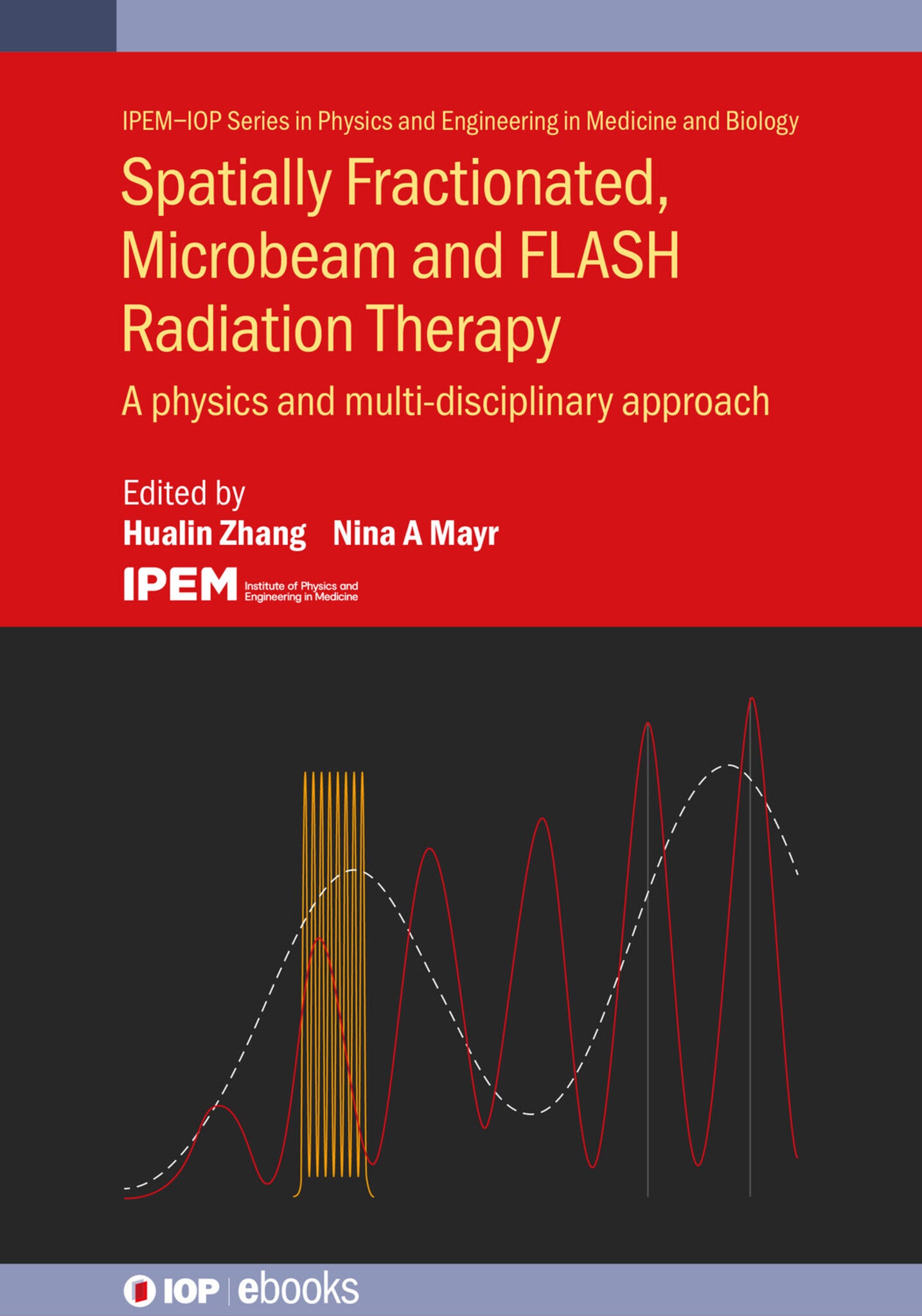We're sorry. An error has occurred
Please cancel or retry.
Spatially Fractionated, Microbeam and FLASH Radiation Therapy

Some error occured while loading the Quick View. Please close the Quick View and try reloading the page.
Couldn't load pickup availability
- Format:
-
29 June 2023

This textbook is a comprehensive review of the physics of heterogeneous radiation and is linked, through a multidisciplinary approach, to clinical applications and biological considerations of heterogenous radiation. Fundamental principles of Spatially Fractionated Radiation Therapy (SFRT), techniques and technologies, dosimetric properties of SFRT, planning methods, documentation, standardized reporting metrics and clinical practice recommendations are comprehensively reviewed. The current status and results of clinical patient studies are presented, which have the potential to advance the management of bulky and advanced tumors. Potential biological underpinnings are reviewed that may challenge the current radiobiological understanding of radiation response and radiation therapy design parameters. Such multidisciplinary understanding is a critical foundation as the field of heterogeneous radiation rapidly advances in technological development and clinical investigation.
Key Features
- GRID collimator- and MLC-based GRID therapy
- 3D Lattice radiation therapy
- FLASH radiation therapy
- Minibeam and microbeam therapy
- Proton beam GRID therapy
- SFRT dose prescription
- GRID and Lattice therapy plan evaluation and documentation
- Clinical applications of SFRT and patient outcomes
- Monte Carlo simulation techniques of SFRT
- Practical applications and procedures (where appropriate)
- Biological correlations and potential biological underpinnings
- Immune phenomena in SFRT

MEDICAL / Oncology / General, Medical specialties, branches of medicine

Preface
Acknowledgement
Editor biography
List of contributors
Introductory commentary
1 Introduction to the principles of spatially fractionated radiotherapy
2 General principles of SFRT biology
3 The immunologic effects of nonuniform dose irradiation
4 The biology of FLASH—a critical appraisal for clinical translation
5 SFRT experience in multi-disease studies of voluminous and metastatic tumors
6 GRID spatially fractionated radiation therapy: definitive radiation therapy in bulky primary tumors
7 SFRT—lattice therapy: definitive radiation therapy in bulky primary tumors
8 Proton beam spatially fractionated radiation therapy: clinical data
9 GRID-collimator-based and static-field SFRT
10 The technical aspects of 3D lattice radiation therapy (LRT)
11 Rotational arc SFRT
12 Electron beam SFRT
13 Proton beam spatially fractionated radiotherapy
14 Radiobiological modeling and equivalent uniform dose for spatially fractionated radiation therapy
15 Spatially fractionated radiation therapy field calibration and commissioning
16 SFRT dose prescription
17 SFRT dosimetric parameters and their associations with treatment response
18 Monte Carlo simulation of photon beam spatially fractionated radiotherapy
19 Monte Carlo simulation of proton SFRT
20 Microbeam SFRT with photons
21 Spatially fractionated radiation therapy: from photons to charged particles
22 Ultrahigh-dose-rate electron FLASH therapy
23 The use of synchrotrons in SFRT and FLASH therapy
Conclusions
Glossary of spatially fractionated and FLASH radiation therapy



